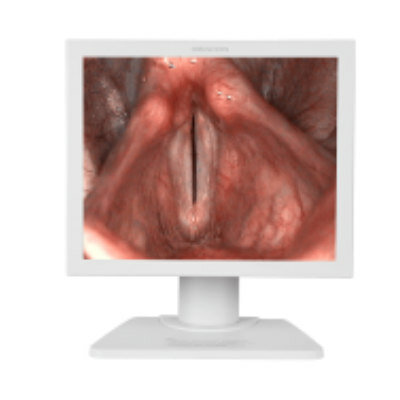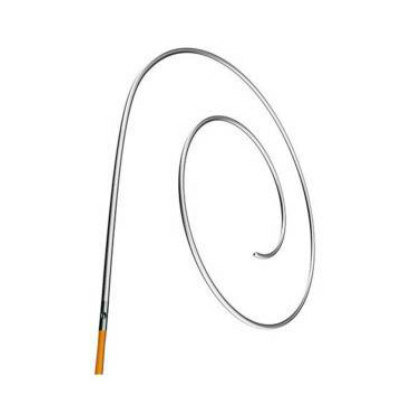New Coronary IVL Catheter Treats Severely Calcified Coronary Artery Disease Using Pulsatile Sonic Pressure
|
By HospiMedica International staff writers Posted on 24 May 2023 |

One in three patients with coronary artery disease have calcified lesions, with heavily calcified coronary lesions posing significant challenges in current coronary interventions due to difficulty in dilation. Existing treatment solutions, including high pressure and modified balloons, as well as atherectomy, face limitations due to their inability to reliably dilate vessels with rigid, severe calcium. These technologies only treat superficial calcium, leaving deep calcium untreated, which can affect procedural outcomes.
Now, the latest device to treat severely calcified coronary artery disease - Shockwave Intravascular Lithotripsy (S-IVL) System with the Shockwave C2 Coronary Intravascular Lithotripsy (IVL) Catheter from Shockwave Medical (Santa Clara, CA, USA) – effectively addresses these challenges. IVL utilizes sonic pressure waves to break down calcium in situ. After inflating the integrated balloon to 4-atm, a small spark at the emitters vaporizes the saline-contrast solution and generates a bubble. This bubble quickly expands and collapses within the balloon, resulting in a brief burst of sonic pressure waves. These waves pass through the coronary tissue and reflect off the calcium, breaking it down with an effective pressure of about 50 atm. The emitters positioned along the length of the device create a localized field within the vessel to fracture both intimal and medial calcium. The integrated balloon plays a crucial role; it positions against the vessel wall to facilitate efficient energy transfer during IVL, then helps to dilate the lesion to maximize lumen gain.
The Shockwave C2+ Coronary IVL Catheter is specifically designed to treat longer calcified lesions and more challenging eccentric and nodular calcium. It minimizes trauma to soft tissue by safely targeting and fracturing intimal and medial calcium. This optimizes stent delivery, expansion and apposition while reducing the risk of perforation and cost escalation. With its straightforward and intuitive system, it makes complex calcified coronary procedures more predictable. The Shockwave C2+ offers 50% more pulses per catheter than Shockwave C2, making it particularly suitable for treating longer calcified lesions and more challenging eccentric and nodular calcium.
“Shockwave C2+ maintains the intuitive catheter design and ease of use that are foundational to the success of Shockwave IVL and incorporates improvements that will enhance procedural efficiency and optimize the treatment of the most challenging morphologies,” said Jonathan Hill, MD, Consultant Cardiologist at London’s Royal Brompton Hospital. “The extra pulses are most advantageous in areas with the highest burden of calcium, including nodular, eccentric, diffuse and multivessel calcium.”
Related Links:
Shockwave Medical
Latest Critical Care News
- Focused Ultrasound Technique Successfully Treats Pediatric Brain Cancer
- Nasal Drops Fight Brain Tumors Noninvasively
- AI Helps Optimize Therapy Selection and Dosing for Septic Shock
- Glowing Bacteria ‘Pills’ for Detecting Gut Diseases Could Eliminate Colonoscopies
- Skin-Permeable Polymer Patch Delivers Insulin Non-Invasively Through Skin
- Nanogel Technology Almost 100% Effective in Destroying Drug-Resistant Bacteria Within Hours
- Wearable Ultrasound Sensor Delivers Noninvasive Treatment Without Surgery
- Gel-Free ECG System to Transform Heart Health Diagnosis
- Biodegradable Patch Repairs Damaged Tissue After Heart Attack
- Magnetically Guided Microrobots to Enable Targeted Drug Delivery

- Smart Nanomaterials Detect and Treat Traumatic Brain Injuries Simultaneously
- Earlier Blood Transfusion Could Reduce Heart Failure and Arrhythmia in Heart Disease Patients
- 'Smart' Shirt Detects Epileptic Seizures in Real Time
- Skin Patch Measures Effectiveness of Flu/COVID Vaccines in 10 Minutes
- Complete Revascularization Reduces Risk of Death from Cardiovascular Causes
- Tiny Fish-Inspired Robots Navigate Through Body to Deliver Targeted Drug Therapy
Channels
Surgical Techniques
view channelLaparoscopic Surgery Improves Outcomes for Severe Newborn Liver Disease
Biliary atresia is a rare but life-threatening liver condition in newborns that blocks bile flow and leads to progressive liver damage if not treated early. Surgery is typically performed within the first... Read moreNovel Endoscopy Technique Provides Access to Deep Lung Tumors
Detecting lung cancer early can save lives, but diagnosing small tumors deep in the outer regions of the lungs remains a major clinical challenge. Although CT scans frequently identify tiny suspicious... Read morePatient Care
view channel
Revolutionary Automatic IV-Line Flushing Device to Enhance Infusion Care
More than 80% of in-hospital patients receive intravenous (IV) therapy. Every dose of IV medicine delivered in a small volume (<250 mL) infusion bag should be followed by subsequent flushing to ensure... Read more
VR Training Tool Combats Contamination of Portable Medical Equipment
Healthcare-associated infections (HAIs) impact one in every 31 patients, cause nearly 100,000 deaths each year, and cost USD 28.4 billion in direct medical expenses. Notably, up to 75% of these infections... Read more
Portable Biosensor Platform to Reduce Hospital-Acquired Infections
Approximately 4 million patients in the European Union acquire healthcare-associated infections (HAIs) or nosocomial infections each year, with around 37,000 deaths directly resulting from these infections,... Read moreFirst-Of-Its-Kind Portable Germicidal Light Technology Disinfects High-Touch Clinical Surfaces in Seconds
Reducing healthcare-acquired infections (HAIs) remains a pressing issue within global healthcare systems. In the United States alone, 1.7 million patients contract HAIs annually, leading to approximately... Read moreHealth IT
view channel
EMR-Based Tool Predicts Graft Failure After Kidney Transplant
Kidney transplantation offers patients with end-stage kidney disease longer survival and better quality of life than dialysis, yet graft failure remains a major challenge. Although a successful transplant... Read more
Printable Molecule-Selective Nanoparticles Enable Mass Production of Wearable Biosensors
The future of medicine is likely to focus on the personalization of healthcare—understanding exactly what an individual requires and delivering the appropriate combination of nutrients, metabolites, and... Read moreBusiness
view channel
Philips and Masimo Partner to Advance Patient Monitoring Measurement Technologies
Royal Philips (Amsterdam, Netherlands) and Masimo (Irvine, California, USA) have renewed their multi-year strategic collaboration, combining Philips’ expertise in patient monitoring with Masimo’s noninvasive... Read more
B. Braun Acquires Digital Microsurgery Company True Digital Surgery
The high-end microsurgery market in neurosurgery, spine, and ENT is undergoing a significant transformation. Traditional analog microscopes are giving way to digital exoscopes, which provide improved visualization,... Read more
CMEF 2025 to Promote Holistic and High-Quality Development of Medical and Health Industry
The 92nd China International Medical Equipment Fair (CMEF 2025) Autumn Exhibition is scheduled to be held from September 26 to 29 at the China Import and Export Fair Complex (Canton Fair Complex) in Guangzhou.... Read more














